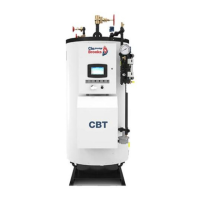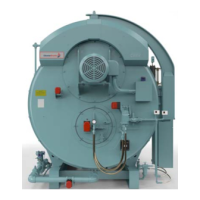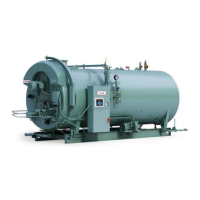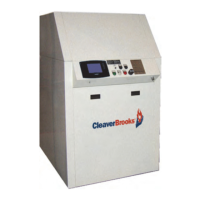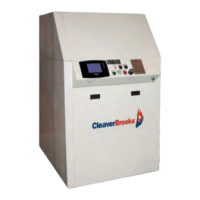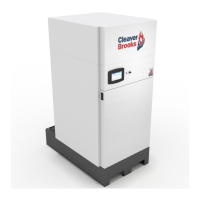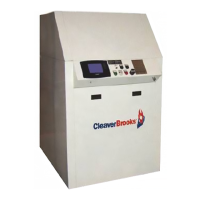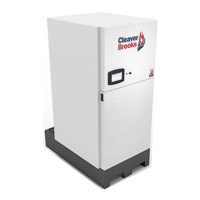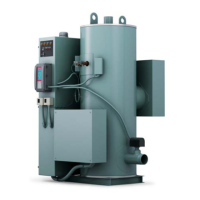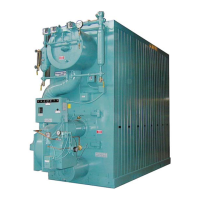Inspection and Maintenance
8-10
750-91 (revised 2009)
Model CB-LE Packaged Boiler Manual
Check periodically for a proper seal between the end of the burner housing and boiler refractory. Any deterioration
of the seal should be corrected, as an improper or poor seal allows air leaks, which can cause overheating or burn-
ing of the burner housing.
Whenever the burner is removed, the diffuser, gas housing and gas spuds (HTB model only) should be checked for
any deterioration. Verify that the diffuser skirt conforms to the bore of the burner housing so as to minimize the
amount of combustion air which bypasses the diffuser. If the burner is a high turndown burner (HTB) model,
check to see that the diffuser is properly located in reference to the gas spuds. There should be 1/4” between the
edge of the diffuser fins and the gas spuds when the burner is installed. Check to see that the diffuser fins don not
interfere with the gas ports or gas spuds in the burner housing.
Check the electrode setting for any cracks that might be present on the porcelain insulator. Replace the electrode if
cracking is evident, since cracking can cause grounding of the ignition voltage. Inspect the tip of the electrode for
signs of pitting, combustion deposits, and wear, and dress as required with a fine file.
Periodically remove the access plug from the gas pilot aspirator and clean out any accumulated lint or other foreign
material.
Check the ignition cables for cracks in the insulation. Verify that all connections between the transformer and the
electrode are tight.
8.9 — Motorized Gas Valve
The motorized gas valve (hydramotor) operating mechanism is completely immersed in oil and little maintenance is
required because of the sealed design. However, proper operation should be checked on a routine periodic basis.
Keep outer parts of the valve clean, especially the stem between the operator and the valve. A nicked, scored or
otherwise damaged valve stem can cause leakage. Do not remove dust covers if installed.
The packing gland is of the O-ring type. If oil is noticed around the operator base or if leakage occurs, repair by
replacing any leaking O-rings and refilling the actuator with oil.
If the actuator is sluggish or fails to operate, even after the oil level is checked, replace the entire operator portion.
8.10 — Solenoid Valves
Foreign matter between the valve seat and seat disc can cause leakage. Valves are readily disassembled, however,
care must be used during disassembly to be sure that internal parts are not damaged during the removal and that
reassembly is in proper order.
A low hum or buzzing will normally be audible when the coil is energized. If the valve develops a loud buzzing or
chattering noise, check for proper voltage and clean the plunger assembly and interior plunger tube thoroughly. Do
not use any oil. Be sure that the plunger tube and solenoid are tight when reassembled. Take care not to nick, dent,
or damage the plunger tube.
